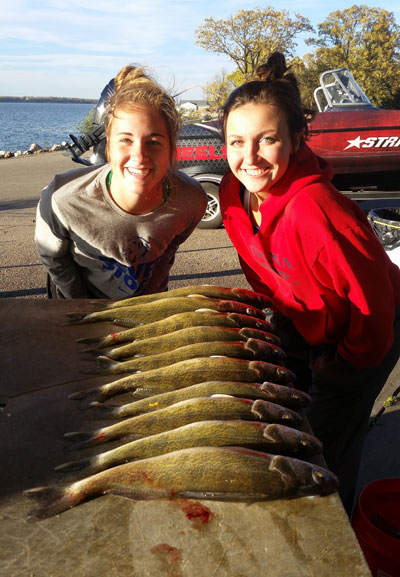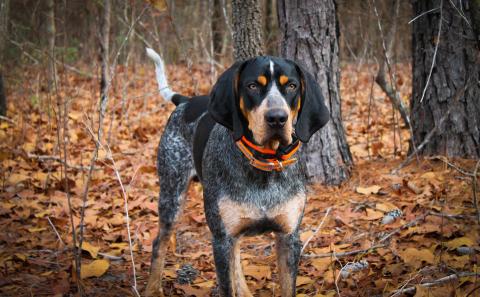 Mossy Oak Fishing Team member Johnnie Candle from Devils Lake, North Dakota, loves to fish all across the U.S. and Canada and guides for walleyes on Devils Lake.
Mossy Oak Fishing Team member Johnnie Candle from Devils Lake, North Dakota, loves to fish all across the U.S. and Canada and guides for walleyes on Devils Lake.
During the end of January and the month of February, walleye fishing can be tough. Most of the people fishing up North are fishing in 8-inch holes in the ice. Locating a spot to fish for walleyes these two months isn’t hard, but the tactics definitely change from when you fish for walleye the other months of the year.
Most of the larger northwestern rivers won’t freeze solid in the winter. The anglers who enjoy fishing for walleyes and sauger will fish the larger rivers during this time. As long as there’s moving water and a good current, you can fish these northwestern waters all year. Fishing in late January and February can be enjoyable, if you hit the right weather. But no one likes to be outside when there’s minus-zero weather. In mid-January, our temperatures here in North Dakota are 32 degrees, and the highs will be in the 40s. So, that’s not a bad day to spend on nice, lazy rivers, fishing for walleye.
Most of the time in the winter months, the walleye will school-up and hold in the deeper sections of the rivers. With current, you can present almost any bait you like and catch walleye at this time of the year. The most common baits now will be the lead-head jig with some type of plastic tail or live minnows and vertical jigging. If vertical jigging doesn’t pay off, veteran walleye anglers will use walleye crankbaits, which are the same diving crankbaits that are fished in the summer months. However, in the winter, we’ll be retrieving those crankbaits much slower than we will in the summer. The walleye will be somewhat sluggish. When the water temperatures hover in the low 30s, the walleye don’t seem to have as much energy to chase baits as they do in the spring and summer. That’s why vertical jigging works, due to your being able to put your bait right in front of the walleye’s face. Or, if you’re slow trolling, you want your crankbait to run immediately in front of the walleye’s face.
With lead-head jigs, the depth of water you’re fishing in the winter as well as the depth of the water and the speed of the current determines the size you use. I’ll fish a 1/4- to 1/2-ounce jig at this time of year because walleyes like to hold in the deepest holes they can locate where the current is the slowest. You may have to fish 25-50 foot deep water to get a bite these months.
Live fathead minnows are a productive bait to fish now too. Be sure you can use live bait in the state where you’re fishing for walleyes. If you can’t fish live minnows, plastic tails for your jigs like Berkley GULP! work well. I prefer the 3-4 inch GULP! plastic minnows for the winter. Also a finesse bait with a split tail that bass fishermen call a fluke will pay walleye dividends. A company, B Fish N Tackle offers a good variety of soft plastic lures. My favorite is the Moxi Minnow, an incredible river fishing bait for walleyes that’s very soft, which means you don’t have to move the jig very much to get a lot of action out of that tail. My favorite colors of jig tails are white. I don’t know why the white color produces so many walleye in the winter months, but it does. If you’re fishing muddy water in late January and February, then you need to fish brighter colors of jig tails like white with chartreuse, pink and/or fire tiger.






























